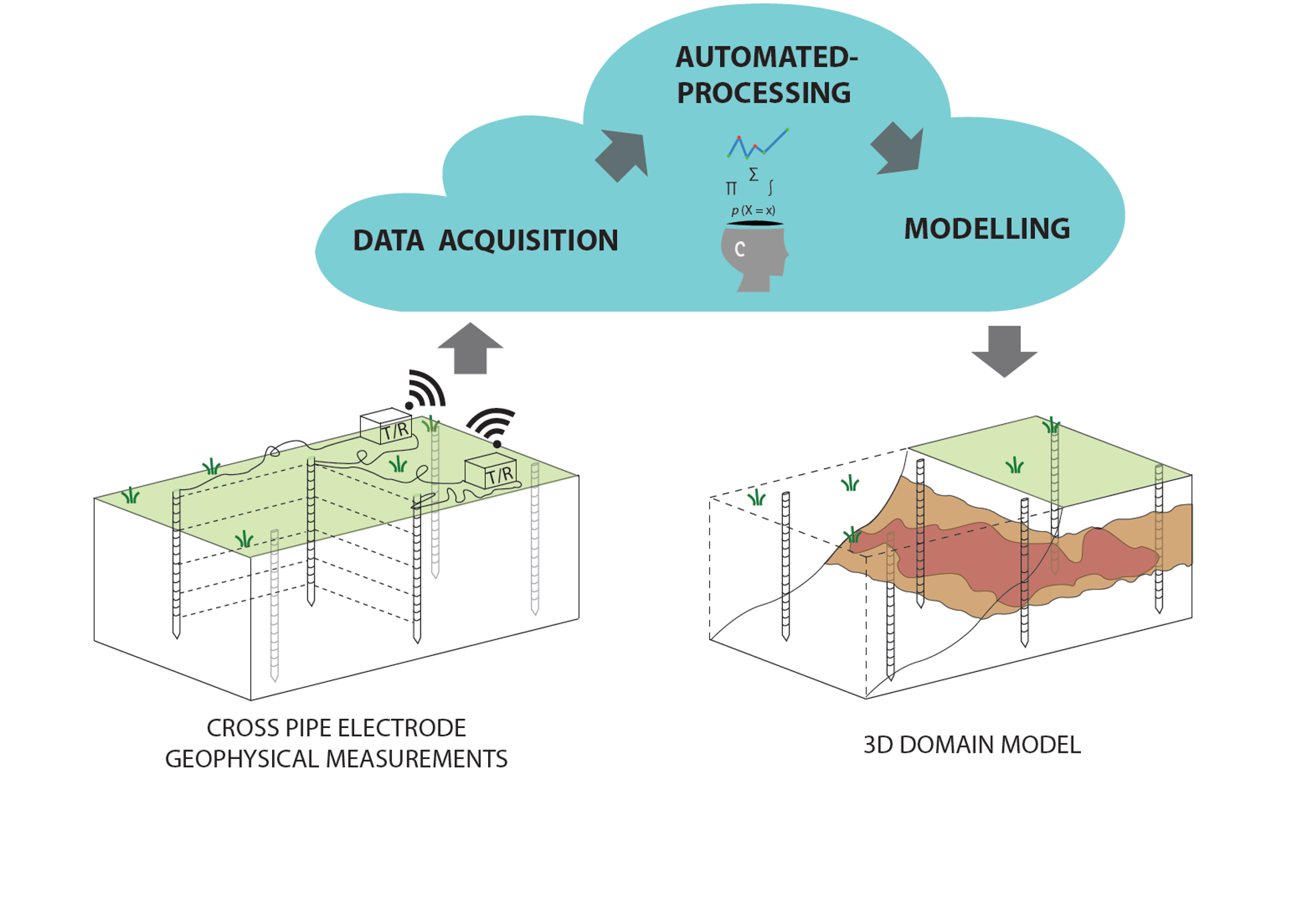New innovation project to boost the use of biotechnology for the cleanup of contaminated soil
Ejlskov A / S and Aarhus University work together to develop a faster, cheaper and easier method for cleaning contaminated soil without the need for excavators. Real-time 3D scanning of the subsoil allows biotechnological cleansers to be injected accurately into the contaminated underground, as well as monitoring simultaneously how the cleansers distribute in the soil. The project is funded by the Innovation Fund's Grand Solutions with an amount of almost 17 million. DKK.

In Denmark and in the rest of the world, authorities face major challenges in cleaning up contaminated sites as required by legislation. The remediation of toxic soil is incredibly costly, partly because in many places around the world, the contamination continues to be removed by excavating the soil and transporting it for treatment elsewhere. Remediation projects are postponed again and again, because the excavation may require that operations at the site are paused or installations must be removed, leading to enormous costs.
This means that biotechnological solutions that break down contamination directly in the soil (so-called in-situ remediation), without causing major disturbances to the daily operations at the site, have excellent potential.
In-situ remediation is typically done by injecting microorganisms and agents (e.g. bacteria and activated carbon) into the contaminated soil. Even though the method is often simpler and cheaper than excavation, in-situ remediation can be optimised even further. With current methods, soil and groundwater must be sampled several times after injection to ensure that the cleaning agents have penetrated throughout the contaminated area. And there may be a need to inject the soil once again.
Management of both goals and agent
During a 3-year project, researchers from Aarhus University in collaboration with Ejlskov A/S and Airborne Instruments ApS, will make the in-situ method even more competitive. In a collaboration between research and commercial innovation, the participants will develop new geophysical tools that make it possible to measure how biological cleaning agents are distributed in the soil when using different injection techniques. The process is similar to when a doctor uses ultrasound to guide a needle when injecting an anaesthetic into a patient’s shoulder, only in this case, induced polarization (DCIP) is used to analyse the subsurface.
Researchers working at the HydroGeophysics Group (HGG), which is part of Arhus University’s Department of Geoscience, are world leaders in the development of geophysical instruments and the collection and visualization of geophysical data.
Ejlskov A/S already uses in-house developed 3D visualization software, which, using data from advanced drilling and measurement systems, can build a detailed illustration of the contamination in soil. Now, this software shall also be able to capture data directly, from the injection process to the treatment of the contamination. This requires developing and linking technologies and instruments that do not yet currently exist. And here the partners in the project complement each other well.
“The goal is to develop a tool that guides the injection of cleaning agents into the soil and enable us to observe it all on a real-time 3D model. This will mean we need less of the expensive cleaning products and are able to continuously monitor the distribution of injectate to ensure it is correctly distributed to break down the contamination. This will really provide the market with a highly sought after alternative to expensive and cumbersome excavation,” says CEO at Ejlskov A/S Palle Ejlskov.
“The technologies, tools and software packages for data handling that we are now developing will move the technology into a higher gear and make it more useful in soil cleanups. With the latest measuring instruments, algorithms and machine learning, we can form 3D images of the contaminated soil layers and their interactions to depths of 20 metres - and create better images of what happens when Ejlskov injects its remediation agents. And the technology shall then be operationalized so that it can be used in practical situations,“ says Professor Esben Auken of Aarhus University’s HydroGeophysics Group.
Kontakt:
Ejlskov A/S: Adm. dir. Palle Ejlskov, mobil 3168 9586, pej@ejlskov.com
Aahus Universitet, Institut for Geoscience: Professor Esben Auken, mobil 2899 2587, esben.auken@geo.au.dk
Aarhus Universitet, Institut for Ingeniørvidenskab: Lektor Jakob Juul Larsen, mobil 4189 3273, jjl@eng.au.dk
Airborne Instruments ApS: R&D Manager Kristoffer Rasmussen Mohr, mobil 2510 8262, krm@airborneinstruments.dk
